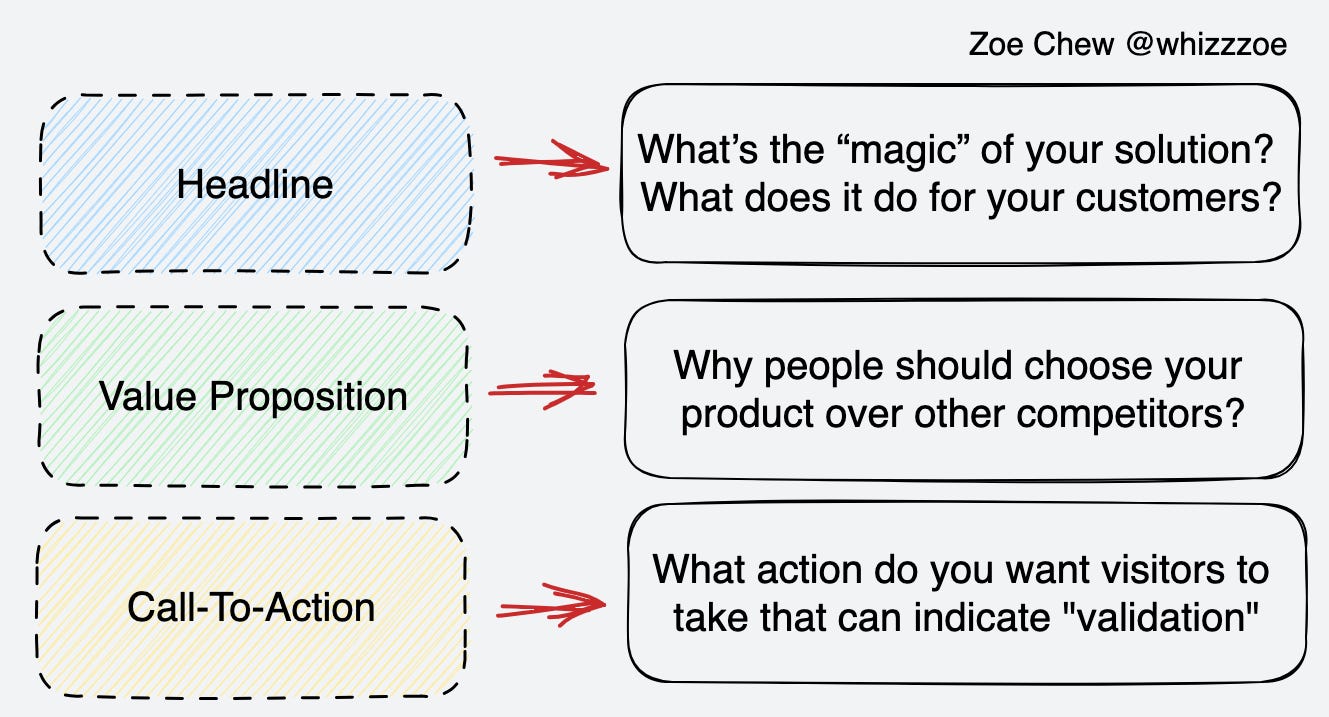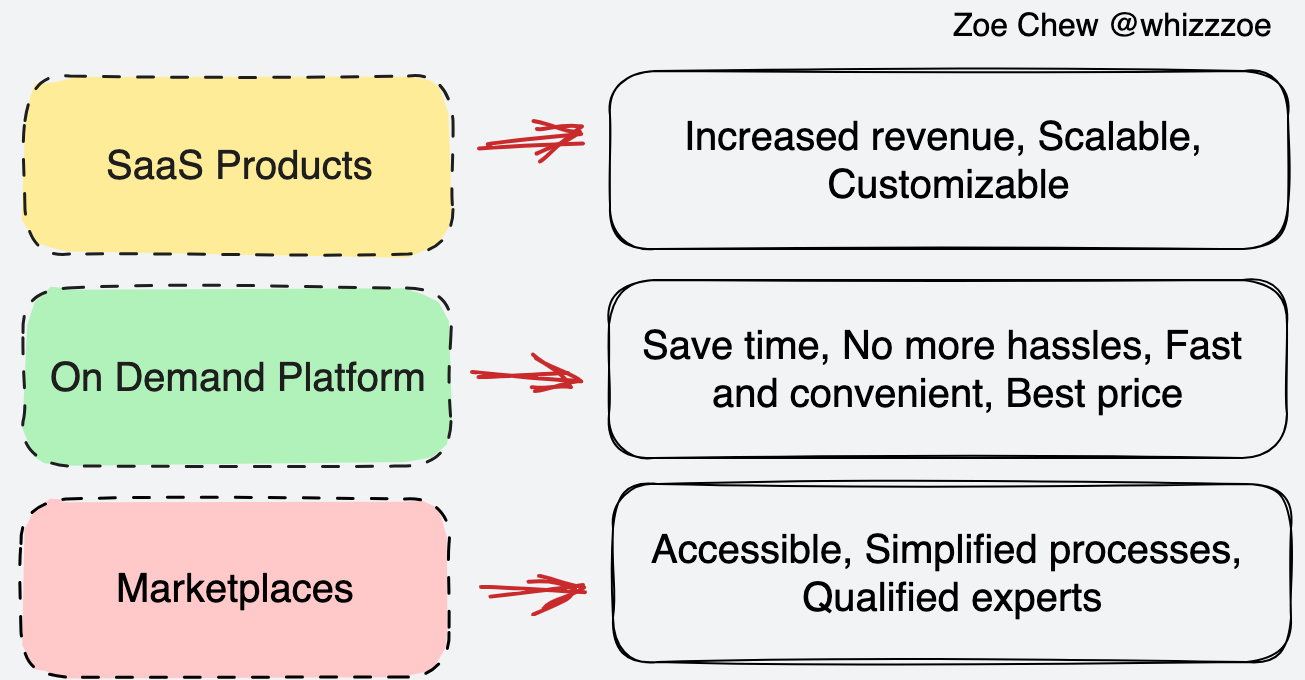How to Optimize Startup MVP Landing Page?
Breakdown of key elements in developing an MVP landing page
As a product builder, I break down product-building lessons to help tech builders create better Internet products. You may also like my top-rated guides such as—Profitable SaaS Ideas, Minimum Viable Market, and MVP Experiments For Your Startup
Building a landing page MVP is an excellent approach to validate your ideas and determine if there is genuine interest from potential customers. However, unlike a sales landing page, there are specific core elements you must include in order to gather evidence of people willing to pay for your solution.
Component #1: Compelling header
When visitors arrive at your landing page, the first thing they see is the hero section.
You want to make sure it's interesting enough to keep people reading and scrolling down for more information.
Few things you can include to make the header section stand out:
(1) Brand logo: Use LogoAi to create a beautifully designed logo in seconds.
(2) Hero visuals: Select captivating visual assets that resonate with your target audience. It could be custom illustrations, intro videos, animations, stock photos, a high-quality product shot, or an image that draws people in.
(3) Headline: In a single sentence, how would you describe your solution? What’s the “magic” of your solution? What does it do for your customers? For instance, "Take ideas from better to best" by Miro; “Let’s build from here” by GitHub.
(4) Value proposition: A simple statement that describes why people should choose your product over other competitors [📙 Guide: Use these messaging to stand out from competitors]
(5) Call-to-action: Prompt visitors to take a specific action by including a clear and compelling call-to-action (CTA) button. This could be a button that says "Sign Up Now," “Get Early Access”, “Book A Free Trial”, or "Try for Free."
Component #2: Sell the problem you solve
One common mistake that entrepreneurs make on their landing pages is to focus solely on pitching their products.
Visitors who proceed to your landing page are not yet interested in the solution.
They want to know why it is so important to them, and why I should care.
In other words, rather than selling the product, you want to sell the problem you're attempting to solve.
You should avoid promoting your product right away and start discussing the pain points and struggles your target audience experiences.
Here are a few frameworks to think through the pain points:
Goal-oriented: Struggling to stay organized and productive?
Workflow-oriented: Overwhelmed and frustrated by complex spreadsheets?
UX-oriented: Don't let slow websites hinder your online success.
Resource-oriented: Exhausted from juggling multiple marketing platforms?
Data-oriented: 70% of startups fail because of this reason.
Component #3: Core benefits
Once you have highlighted the pain points your customers are experiencing, it's important to showcase how your solution effectively addresses those challenges.
To do this, identify at least three core benefits that your product or service offers and center your landing page content around these benefits.
When writing your landing page, focus on translating your solution into tangible value for your customers.
Highlight how your product is useful, valuable, and helpful to your potential customers.
For example, if your solution is to provide one-on-one online tutoring for K12 students, you can categorize your benefits as follows:
Improve academic performance: Personalized learning experience for your child
Qualified tutors: Easily find tutors who specialize in specific subjects
Reduce homework stress: Get instant homework assistance via live videos, chat, or text.
Component #4: Validation mechanism
When creating your MVP landing page, include a "validation mechanism" to gauge the interest and viability of your solution.
These mechanisms can take different forms and serve as indicators of market demand and viability of your product idea—that is, whether people are willing to pay for the idea or will adopt the solution if payment is not possible in the early stage.
Here are a few elements you can consider:
Beta sign-up: Best for early access MVP campaign.
Online form: Best for collecting information from potential customers, such as their needs, pain points, or preferences.
Scheduling: Best for “concierge MVP” [🔖 Guide: MVP types for your startup idea] that utilizes manual services such as free/paid consultation to understand customer’s pain points before building an actual MVP.
User profile: Best for gaining early traction by requiring users to sign up for a free account, customize their preferences, and interact with an early version of the dashboard.
Update 2024: The Ultimate Idea Validation Framework
Working on new product ideas? I’ve combined various tactics, frameworks, and processes to determine whether your product ideas have the potential to be monetized. Click here to learn ::








I appreciate the detail & work you put into this post. is very comprehensive and incredibly valuable..